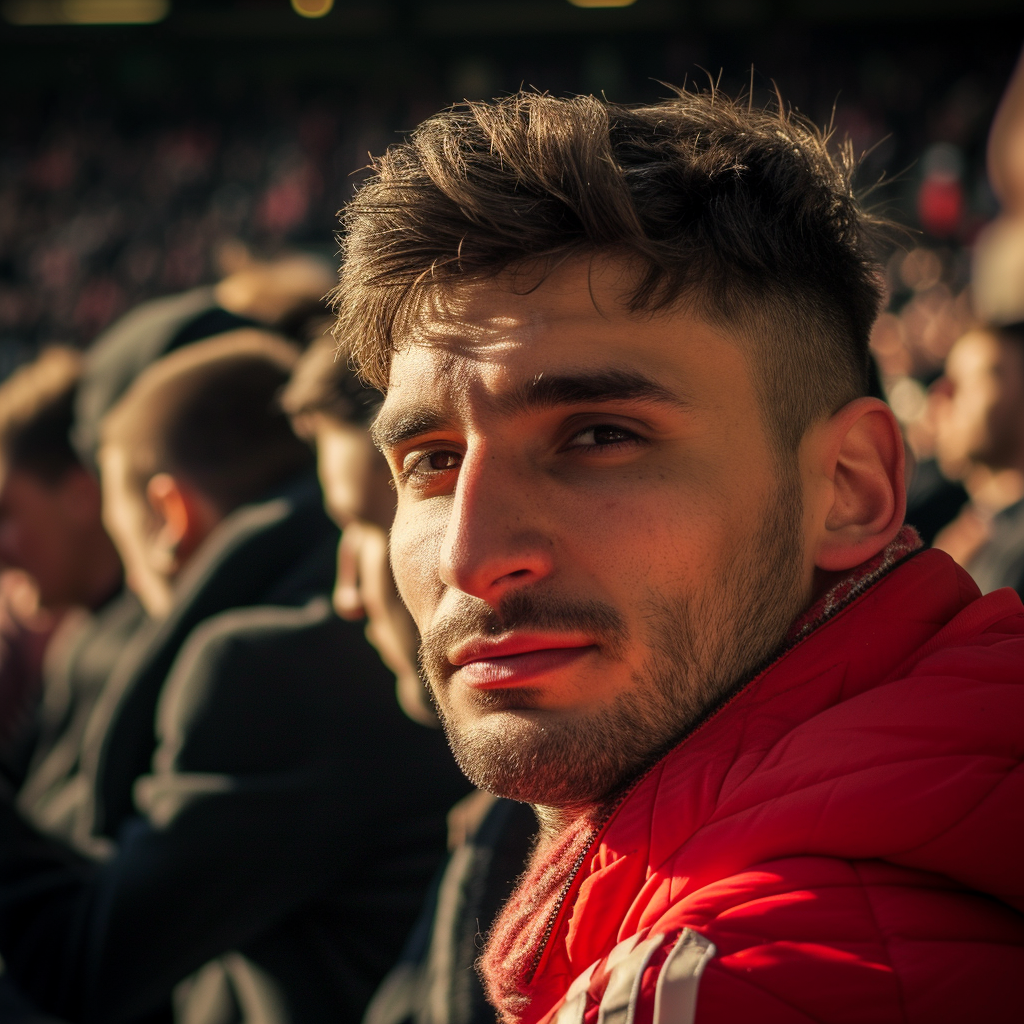The Formula 1 Japanese Grand Prix is set to take place at the revered Suzuka International Racing Course, a favourite among the racing community for its challenging layout and storied history within the sport.
Returning to the F1 calendar after previous cancellations, the event promises to showcase the pinnacle of motorsport technology and excitement.
Enthusiasts from around the globe can look forward to the 2024 event scheduled between April 5-7, with the main race occurring on Sunday, April 7.
The weekend is not only significant for its racing thrills but also for its celebrations of Japanese culture and the fusion of tradition with high-octane excitement.
Visitors planning to attend are presented with numerous options for tickets and hospitality packages to experience the Grand Prix in style.
Accommodation recommendations span from the nearest cities of Nagoya, Osaka, and Tokyo, allowing fans to choose based on their travel preferences.
With thorough preparations, one can ensure a smooth and enriching visit to the Suzuka Circuit, diving deep into the heart of Formula 1’s racing legacy while enjoying the local hospitality and culture.
Key Takeaways
- The Suzuka Circuit hosts the 2024 Formula 1 Japanese Grand Prix, scheduled for April 5-7.
- Ticketing and hospitality options offer experiences for different preferences and budgets.
- Accommodation spans across Nagoya, Osaka, and Tokyo, providing a variety of choices for visitors.
Need Help Beating the Bookies?
Our expert betting tipsters have been taking cash off the bookies since 2014! If you need a helping hand with winning then why not check them out?
Browse Our Tipsters
Euro Football Punter
Simple Yet Highly Profitable Football Tipster Focussing on the Major Leagues
Visit PROFILE
Corner Betting King
Miguel Proves that Money can be Made on Niche Markets with his Corner Betting Service
Visit PROFILEHistory of the Japanese Grand Prix
The Japanese Grand Prix is a significant fixture on the Formula 1 calendar, renowned for its history of dramatic races and being a common battleground for the deciding of World Championships.
Japan first welcomed Formula 1 at the Fuji Speedway in 1976 and 1977. However, it was not until a decade later that the Grand Prix became a permanent fixture, with Suzuka International Racing Course hosting its first race in 1987.
Suzuka, owned by Honda, is celebrated for its unique figure-eight layout and challenging corners like the infamous 130R.
The intense rivalry between Ayrton Senna and Alain Prost marked some of the most unforgettable moments in Suzuka’s history. Their collisions in 1989 and 1990 are etched in the annals of the sport.
Since then, the Japanese Grand Prix has witnessed the triumphs of notable drivers such as Damon Hill, Mika Häkkinen, Michael Schumacher, Sebastian Vettel, and more recently Lewis Hamilton; all of whom have clinched world titles, emphasising the track’s significance in deciding championships.
| Year | World Champion Crowned at Suzuka |
|---|---|
| 1987 | Nelson Piquet |
| 1988 | Ayrton Senna |
| 1989-1990 | Alain Prost and Ayrton Senna respectively |
| 1996 | Damon Hill |
| 1998-1999 | Mika Häkkinen |
| 2000-2003, 2004 | Michael Schumacher |
| 2011 | Sebastian Vettel |
Ferrari and Red Bull are amongst the teams that have historically performed well at the Suzuka circuit, a testament to both their engineering prowess and the skill of their drivers.
In 2024, the Grand Prix at Suzuka is an important event, serving as a modern showcase of Formula 1’s continued relevance and evolution in motor racing. It remains a favourite among drivers and fans alike for its rich history and the technical challenge it poses.
Suzuka Circuit Overview
The Suzuka Circuit holds a prestigious spot on the Formula 1 calendar, known for its challenging track layout and rich history of significant races. This circuit not only tests the prowess of the drivers but also provides extensive facilities and services for spectators.
Track Layout and Features
The Suzuka International Racing Course, commonly referred to as Suzuka Circuit, is characterised by its unique figure-eight layout, one of the only tracks in the Formula 1 circuit with such a design. Here’s a glance at the track’s specifications:
- Length: Approximately 5.8 kilometres
- Number of Laps for the Grand Prix: Variable each season
- Notable Feature: The 130R, a sweeping right-hand corner known for its high speeds
- Lap Record: To be updated with relevant year data
Past Significant Races
Suzuka has been the scene of many memorable title deciders in the history of the Japanese Grand Prix. Some of the most noteworthy races include:
- 1989 Japanese GP: A clash between Ayrton Senna and Alain Prost
- 1998 and 1999 Japanese GP: Mika Häkkinen’s victories, securing his world titles
- Recent Wins: Information to be updated post-race with accurate winners
Facilities and Services
Suzuka Circuit is equipped with a range of facilities and services to enhance the spectator experience:
- Accommodation: Nearby hotels with shuttles to the circuit
- ATMs: Multiple on-site for convenient cash withdrawals
- Toilets: Ample and well-maintained facilities
- Parking: Extensive parking available for attendees
2024 Grand Prix Schedule
The 2024 Japanese Grand Prix, as part of the Formula 1 calendar, is scheduled to unfold over a meticulously organised race weekend. The schedule includes a series of practice sessions, qualifying rounds, and culminates in the main race event.
Race Weekend Timeline
The Grand Prix weekend begins with practice sessions, followed by qualifying rounds and concludes with the race itself on Sunday, April 7th, 2024.
The race weekend’s timetable is structured to allow teams and drivers to progressively build up to the pinnacle event, the Grand Prix.
Practice Sessions
Formula 1 teams commence the race weekend with practice sessions, which are essential for drivers to familiarise themselves with the circuit and for teams to fine-tune their vehicles.
Friday:
- First Practice Session: The first practice session welcomes teams to the track, offering an initial assessment of car performance.
- Second Practice Session: In the second practice session, drivers typically continue to assess tyre behaviour and refine their racing lines.
Saturday:
- Third Practice Session: The third and final practice gives teams a last chance to perfect their set-up before the qualifying rounds commence.
Qualifying Rounds
Qualifying determines the drivers’ starting positions for the race and comprises three sessions to narrow down the fastest times.
- Saturday Afternoon:
- First Qualifying Session (Q1): All drivers take to the track attempting to set a time quick enough to make it into the second session.
- Second Qualifying Session (Q2): The fastest drivers from Q1 battle it out for a chance to enter the final session.
- Third Qualifying Session (Q3): The top ten drivers aim to claim the pole position, setting the scene for the start of the Grand Prix.
Visitor Guide
The Japanese Grand Prix in Suzuka is a premier event for motorsport enthusiasts. This visitor guide is designed to help fans experience a seamless and exciting trip, covering essential travel and stay information, local attractions, and helpful tips for enjoying the event and exploring Japan.
Getting There
Suzuka is well-connected by Japan’s efficient public transport system.
Fans can take the Shinkansen (bullet train) from major cities like Tokyo or Osaka and then transfer to a local train for Suzuka.
Alternatively, domestic flights to Nagoya followed by a train ride to Suzuka are viable options.
Taxis are available but can be expensive; thus, public transport is highly recommended.
Accommodation and Stay
For accommodation, options range from budget to premium.
It is advisable to book hotels or guesthouses near the circuit or in nearby cities such as Nagoya, which is approximately 50 kilometres from Suzuka.
Early booking is essential to secure the best rates and locations.
Local Attractions and Activities
Off-track, attendees can explore Suzuka’s attractions or take day trips to culturally rich cities like Kyoto. Local attractions include:
- Suzuka Circuit’s amusement park
- Local museums showcasing art and history
- Special events in conjunction with the Grand Prix
Practical Information
Visitors to Japan should be mindful of Japanese customs and language.
Although many locals speak English, learning basic Japanese phrases is appreciated.
The currency used is the yen, and it’s recommended to have cash on hand since some establishments may not accept cards.
Before travel, check for visa requirements and expect mild to warm temperatures in April.
A comfortable budget should account for accommodation, transport, and off-track activities.
Tickets and Hospitality
For fans eager to experience the thrill of the Japanese GP, securing tickets and exploring hospitality options are essential steps. With a range of choices available, attendees can witness the race in comfort and style.
Purchasing Tickets
Fans interested in joining the electrifying atmosphere of the Japanese Grand Prix can purchase tickets through official channels.
It is advisable to download tickets or opt for secure delivery where available.
The MSC Cruises Japanese Grand Prix 2024 offers diverse ticket options ranging from general admission to grandstand seats.
- General Admission: Provides access to view the race from various open areas around the circuit.
- Grandstand Tickets: Offer reserved seating and better views of the circuit.
Hospitality Options
For those seeking a premier experience, hospitality packages present an upscale way to enjoy the Grand Prix.
These packages often include gourmet dining, open bars, and exclusive access to special events and areas.
- Paddock Club: The epitome of hospitality, offering fine dining, pit lane walks, and meet-and-greet opportunities with drivers.
- VIP Suites: Provide privacy and comfort with excellent trackside views, catering, and sometimes even appearances by F1 personalities.
Visitors should consider booking well in advance to secure the best options for the 2024 Japanese Grand Prix.
Teams and Drivers
In anticipation of the Japanese Grand Prix 2024, Formula 1 teams are meticulously planning their strategies. Meanwhile, the drivers are preparing for one of the most demanding races of the season.
Team Strategies
Each team enters the Grand Prix with a unique approach, optimising their cars to suit the Suzuka Circuit’s challenges.
Red Bull Racing and Ferrari are known to focus on aerodynamic efficiency and power unit performance, both critical on this high-speed track.
Meanwhile, Mercedes, with their expertise, often emphasises strategic pit stops and team radio communication to adapt quickly during the race.
McLaren and other midfield competitors aim for strategic excellence to capitalise on any opportunity.
Pit stops are planned with precision, as they can significantly affect the race outcome. Meanwhile, Honda, powering some of the teams, focuses on providing reliable and powerful engines, imperative for the straights and high-speed corners of Suzuka.
Driver Profiles
The driver line-up boasts exceptional talent, with established champions and exciting newcomers:
- Max Verstappen (Red Bull Racing): The Dutchman’s aggressive driving style and sharp strategic mind make him a consistent threat.
- Sergio Perez (Red Bull Racing): Perez, known for his tire management, often excels in race conditions.
- Charles Leclerc (Ferrari): Leclerc’s quick qualifying pace and racecraft pose a formidable challenge to his rivals.
- Carlos Sainz (Ferrari): Sainz is known for his consistency and ability to score valuable points for the team.
Drivers at Mercedes, including seasoned competitors, utilise their experience and skill, complemented by the team’s strategic acumen, to secure top positions.
- Lando Norris (McLaren): He’s gaining a reputation for his raw speed and ability to extract the maximum from his car.
- Oscar Piastri (McLaren): The rookie brings fresh talent and determination to the grid, which he’s eager to showcase.
- Valtteri Bottas: He continues to provide his team with a blend of experience and speed, making every opportunity count.
Yuki Tsunoda, participating at his home Grand Prix, has the support of the local fans and the added motivation to perform at his best.
Support Races and Events
The Japanese Grand Prix 2024 offers spectators more than just the pinnacle of motorsport racing; it is a weekend packed with high-speed support races and interactive fan engagements.
Highlighting the on-track action in Suzuka are the Porsche Carrera Cup Japan and Ferrari Challenge Japan, alongside off-track events such as autograph sessions, encapsulating a complete racing spectacle.
Porsche Carrera Cup Japan
The Porsche Carrera Cup Japan race is an integral part of the support programme, featuring local and international drivers competing in one of motorsport’s most prestigious one-make series.
The series is known for its identical Porsche vehicles which tests the driver’s skill on the Suzuka International Racing Course. Expect close racing and professional talent showcasing their capabilities in state-of-the-art machinery.
Ferrari Challenge Japan
Alongside Porsche, the Ferrari Challenge Japan takes the stage, demonstrating the performance of Ferrari models in a competitive atmosphere.
This one-make series highlights elite drivers across various experience levels battling it out in the latest Ferrari challenge cars. The event underlines Ferrari’s dedication to motorsport and provides fans an opportunity to witness the iconic brand in action.
Autograph Sessions and Fan Events
Race weekend is also an opportunity for fans to interact with their favourite drivers through autograph sessions and meet and greets, reinforcing the connection between the sport and its supporters.
The event organisation prioritises these fan-centric events, offering numerous opportunities for devotees to get up-close and personal with racing heroes, increasing the allure of the race weekend beyond the main Grand Prix.
Media Coverage
The Japanese Grand Prix 2024 enjoys comprehensive media coverage, with press conferences and live broadcast information readily available for avid Formula 1 fans.
Press Conferences
Press conferences are a significant aspect of the Formula 1 media landscape, offering insights and comments directly from the drivers and teams.
The 2024 Japanese Grand Prix schedules these conferences before and after race events, with sessions typically on Thursday pre-race and post-race on Sunday. These provide valuable commentary and are covered by various sports news outlets.
Live Broadcast Information
Live Broadcast Details for the 2024 Japanese Grand Prix:
- TV Schedules: A full weekend schedule, including practice sessions, qualifying rounds, and the race, is made public in the lead-up to the event. This ensures viewers can plan ahead to catch all the action.
- Live Streaming: Options for live streaming are widely accessible, catering to those who prefer to watch the race via internet platforms.
- Free-to-air Highlights: For casual viewers, highlights are shown free-to-air, offering a digestible summary of the Grand Prix.
Viewers should consult local listings for specific TV schedules and live streaming services available in their region.
Safety and Regulations
Attending a Grand Prix requires an understanding of both safety protocols and racing regulations. The Japanese Grand Prix at Suzuka is no exception, where specific measures are in place to ensure the safety of drivers and spectators while adhering to the rules of Formula 1 racing.
Track Safety Measures
Suzuka Circuit is equipped with advanced safety features to protect participants during the race.
Safety cars stand ready to be deployed to control the pace in case of an incident. Meanwhile, marshals are strategically positioned around the track to provide immediate assistance and facilitate safe racing conditions.
These safety personnel are crucial for maintaining order on-track, especially during an emergency where quick action is needed to secure the safety of drivers and crews.
Racing Regulations
Formula 1’s sporting regulations are strictly enforced at the Japanese GP. Specific to the event, penalties are given for infractions such as false starts or exceeding track limits.
The stewards monitor all racing activities to ensure fair play. The following is an outline of key regulations:
- Grid positions are determined by the qualifying sessions.
- Penalties may involve time additions, grid position drops, or in some instances, disqualification.
- Stewards issue penalties based on infractions to maintain competitive integrity.
Weather Considerations
The unpredictable weather at Suzuka necessitates particular attention.
Rain is a common occurrence during the race weekend, potentially affecting visibility and track conditions.
Teams and drivers adjust their strategies accordingly, considering the increased likelihood of employing safety cars in wet conditions.
Meanwhile, the organisers monitor forecasts closely, ensuring readiness to implement whatever safety protocols are necessary.
Travel and Accommodation Tips
When planning a trip to the Japanese Grand Prix, attendees should consider booking accommodation early, particularly in cities like Nagoya, Osaka, and Tokyo, which are popular hubs for Grand Prix attendees. They should also familiarise themselves with Japanese customs to ensure a respectful and enjoyable visit.
Booking in Advance
Booking early can secure better rates and ensure availability, especially since the Grand Prix coincides with the cherry blossom season, a peak time for tourism in Japan.
Accommodation options range from hotels to holiday cottages and apartments.
It’s advised to book lodgings in Nagoya due to its proximity to the Suzuka Circuit. For those wanting to explore more of Japan, staying in Osaka or Tokyo before or after the race weekend might be appealing.
- Suzuka: Preferably, find a place closer to the circuit.
- Nagoya: Strategic for short commutes, with a range of hotels available.
- Osaka/Tokyo: Ideal for extending the trip and exploring Japan’s cultural offerings.
Regarding travel visas, visitors should check the latest requirements for entering Japan as they vary depending on the traveller’s home country.
Ensure that passport and visa documentation are in order well ahead of the planned travel dates.
Cultural Etiquette
Understanding and adhering to Japanese customs can greatly enhance the travel experience. Here are key pointers:
- Greetings: Bowing is customary when meeting someone, and handshakes are less common.
- Public Behaviour: Loud conversations and phone calls are frowned upon, especially on public transport.
- Hospitality: Refusing an offer may be considered rude; it’s polite to accept, even if it’s just a small amount.
Visitors should also be aware of the nuances in accommodation etiquette:
- Shoes: It is customary to remove shoes when entering someone’s home and often in accommodations, like ryokans.
- Tipping: Unlike in other countries, tipping is not customary and can sometimes be seen as offensive.
Racing Legacy
The Japanese Grand Prix is steeped in a deep history that has seen some of the most thrilling and decisive moments in Formula 1. It’s a track that has often crowned world champions and provided dramatic showdowns that have become etched in the annals of motorsport.
Memorable Moments
Suzuka International Racing Course, or simply Suzuka, has hosted numerous unforgettable races since it took over from Fuji Speedway after 1977.
Ayrton Senna and Alain Prost had their infamous collisions in 1989 and 1990, shaping the narrative of one of the sport’s greatest rivalries.
In 1996, Suzuka witnessed Damon Hill clinch his World Championship, and later in 1998 and 1999, Mika Häkkinen followed suit.
Multiple times, the track has been a battleground where drivers’ championships were decided, often in the final laps of the race.
- 1989: Senna versus Prost collision, influencing the championship outcome
- 1996: Damon Hill secures his only World Championship
- 1998 & 1999: Mika Häkkinen wins back-to-back titles at Suzuka
Contribution to Motorsport
Suzuka’s contribution to motorsport extends beyond these iconic moments. The track, owned by Honda, has seen various technological advancements in F1 cars.
Teams such as Ferrari, McLaren, and Mercedes often drove these advancements. Suzuka’s unique figure-eight layout and its range of high-speed corners, challenging chicanes, and sequences like the ‘S’ curves offer a comprehensive test of a car’s aerodynamics and balance.
These features push teams to innovate continuously. The lap record is a testament to the technological progression in the sport, with Lewis Hamilton setting a blistering pace in recent years.
Every iteration of car design and aerodynamics has been tested and proven on Suzuka’s tarmac, contributing richly to F1’s evolution.
Post-Event Discussions
Following the completion of the thrilling Formula 1 Japanese Grand Prix, two main areas emerge for in-depth consideration: the technical analysis of the race results and the predictions that set the stage for future F1 fixtures. This dissection of performance and forecasting shapes the narrative beyond the chequered flag.
Analysis of Race Results
The Japanese GP, recognised for its technical complexity and historical significance, often serves as a critical round in the Formula 1 championship. The analysis of race results extends beyond the podium finishers, considering the intricate strategies and decisions that influenced the final standings.
Performance metrics, pit stop times, and team radio communications offer insight into how the race unfolded for each team and driver.
- Team Strategies: Reviewing pit stop timing and tyre choices illustrates how strategies played out, including which teams gained strategic advantages.
- Driver Performances: Assessing driver behaviour on critical corners like 130R and monitoring team radio for in-race decisions highlight individual driver prowess and tactical acumen.
Future Predictions
Looking ahead, the outcomes of the Grand Prix may have set the tone for upcoming title deciders. The Japanese GP is often seen as a bellwether for teams’ and drivers’ prospects in the remaining season.
- Championship Dynamics: This section analyses the impact of the Japanese Grand Prix results on the drivers’ and constructors’ championship standings.
- Technological Trends: It also identifies any innovative technical adaptations premiered at Suzuka that teams might develop further in subsequent races.
The subtleties of the Suzuka circuit, coupled with Japan’s passionate fan base, invariably contribute to the anticipation of next year’s Grand Prix, where teams and drivers will renew their quest for dominance in the pinnacle of motor racing.
Merchandise and Memorabilia
At the 2024 Japanese Grand Prix, fans have multiple opportunities to purchase official merchandise to commemorate their experience at the Suzuka Circuit. Various shopping venues are located around the track, ensuring attendees can easily find souvenirs and collectables throughout the event.
Shopping Venues:
- Gate Shop
- Official Shop in GP Square
- V Star Shop
- Circuit Plaza
Each location offers a range of products, from clothing and accessories to exclusive art pieces and special event memorabilia. The Gate Shop is known for its convenience, allowing visitors to grab souvenirs on their way in or out.
At the heart of the circuit, the Official Shop in GP Square presents the widest selection, including team apparel and licensed Formula 1 merchandise. The V Star Shop specialises in high-end collectables, perfect for those seeking something extra special.
Meanwhile, the Circuit Plaza caters to a broad audience, with an assortment of items to suit all ages and preferences.
Opening Times:
- April 4th (Thursday) – 7th (Sunday)
- Gates open until 17:00
All fans require a valid 2024 F1 Japan Grand Prix ticket to enter Suzuka Circuit’s shopping areas during the event dates. Additionally, purchases may incur a separate fee at the point of sale.
For fans interested in the artwork, limited-edition prints and posters often celebrate the Grand Prix, allowing aficionados to take home a piece of the race’s history and spirit. Special events might also offer exclusive merchandise, adding to the grandeur of the occasion.
To manage demand and enhance the shopping experience, visitors should check opening times and prepare for potential queues. This ensures they can secure their desired memorabilia with ease.
Frequently Asked Questions
This section addresses common queries about the 2024 Japanese Grand Prix, providing essential details for prospective attendees.
How can one purchase tickets for the Japanese Grand Prix 2024?
Tickets can be purchased through the official Formula 1 website or authorised ticket sellers. Early booking is recommended due to high demand.
What are the exact dates for the Japanese Grand Prix in 2024?
The Japanese Grand Prix is scheduled for Sunday, 7 April 2024, with practice and qualifying sessions taking place on the preceding days.
Could you provide the schedule for the Japanese Grand Prix 2024?
The full weekend schedule includes practice sessions, qualifying rounds, support races, and the main race on Sunday. Detailed timings are available on the Formula 1 official website closer to the event date.
What are the ticket prices for the Japanese Grand Prix in 2024?
Ticket pricing varies based on seating categories and packages. Prices will be made available when tickets go on sale and can be found on the official Formula 1 website or through official ticket vendors.
What is the location of the Japanese Grand Prix in 2024?
The event will take place at the Suzuka International Racing Course, located in Suzuka City, Mie Prefecture, Japan.
Are attendees permitted to bring their own food into the Suzuka Circuit?
The circuit’s policy on bringing food can change. Historically, attendees have been allowed to bring their own food into the venue. Attendees are advised to check the latest guidelines before the event for any updates to the policy.





